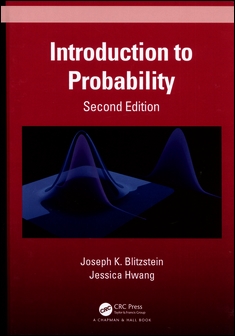書籍分類

Introduction to Probability 2/e
作者:Joseph K. Blitzstein, Jessica Hwang
原價:NT$ 1,750
ISBN:9781138369917
版次:2
年份:2019
出版商:Taylor & Francis
頁數/規格:620頁/精裝單色
參考網頁:Introduction to Probability 2/e
版次:2
年份:2019
出版商:Taylor & Francis
頁數/規格:620頁/精裝單色
參考網頁:Introduction to Probability 2/e
內容介紹 目錄 作者介紹
- Description
Developed from celebrated Harvard statistics lectures, Introduction to Probability provides essential language and tools for understanding statistics, randomness, and uncertainty. The book explores a wide variety of applications and examples, ranging from coincidences and paradoxes to Google PageRank and Markov chain Monte Carlo (MCMC). Additional application areas explored include genetics, medicine, computer science, and information theory.
The authors present the material in an accessible style and motivate concepts using real-world examples. Throughout, they use stories to uncover connections between the fundamental distributions in statistics and conditioning to reduce complicated problems to manageable pieces.
The book includes many intuitive explanations, diagrams, and practice problems. Each chapter ends with a section showing how to perform relevant simulations and calculations in R, a free statistical software environment.
The second edition adds many new examples, exercises, and explanations, to deepen understanding of the ideas, clarify subtle concepts, and respond to feedback from many students and readers. New supplementary online resources have been developed, including animations and interactive visualizations, and the book has been updated to dovetail with these resources.
分類位置:
商管 > 統計 > 統計學


